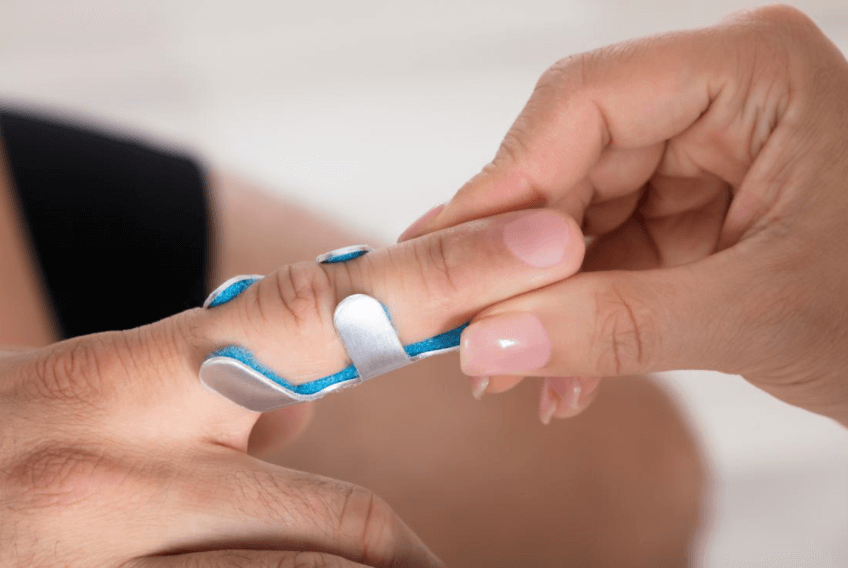We work and play sports using our fingers, so it is not ruled out that these useful ‘tools’ suffer injuries, such as a fracture. Know the first aid to use in case of breaking a finger.
Whether of the hand or the foot, the fingers’ blows are among the most common things, from the typical kick to the table leg to those produced by sports practice. And this is because we use them to get in touch with everything that surrounds us. They are our work tools and, therefore, they are more likely to suffer accidents.
Normally the blows we give ourselves are of little importance, apart from the pain and discomfort they can cause, even after several days. But sometimes, it happens that this blow causes a real injury and requires medical attention. It is the case of finger fractures.
In this article, we will teach you some fundamental techniques to carry out first aid in facing a broken finger and provide relief before being able to go, if necessary, to a medical center in search of more specialized care.
Types of and causes of finger fractures
One of the most common injuries, when we talk about the fingers, is fractures. A fracture is the breakage of the bone, and it occurs when a force or friction greater than its resistance is applied, thus breaking the structure. The same as a wooden stick would do when bending or hitting it.
Some many ways or situations can cause a broken finger, but they can all fall into three groups:
- Direct trauma fractures: the origin is in a direct blow with a blunt object that crushes the bone and breaks it, such as a hammer to a finger or a fall against the ground.
- Indirect trauma fractures: unlike with direct trauma, here the energy focus is not at the same site as the fracture but far away, and what is caused is the extreme rotation of the bones. For example, when the hand’s fingers are twisted, and one bone rotates over another, thus causing the break. This group includes pulling fractures, where the soft tissues attached to the bone pull until that area of attachment is broken and part of the bone can be brought in.
- Spontaneous fractures: produced when a constant force is being exerted on the same point, which ends up wearing down the bone and causing the break. They are also called fatigue fractures, and they are quite common in runners and athletes.
The healing time for these fractures depends on the severity of the fracture. If it is a mild fissure, two weeks of rest may be enough. However, more serious tears can take four to six weeks to heal and even require surgical intervention. If the nail has been affected, it will probably fall off after a week or two, and a new nail will start to show after a month.
Signs and symptoms of a finger fracture
As a common symptom in any injury that involves a fracture of one or more fingers, we have acute pain, which is usually a throbbing pain at rest and increases with movement or touching. This pain is usually accompanied by an increase in local temperature and a burning sensation at the fingertip.
The swelling usually appears after a few minutes, a hematoma can even form under the nail, and it becomes increasingly black due to blood accumulation. If the blow to the finger has been very direct, the nail could come off.
Because of the pain and swelling, the mobility of the finger will be quite reduced. Depending on the bone affected, mobility will be more or less affected. A tear in the proximal phalanx, where the finger will have very little mobility, is not the same as in the distal phalanx, which moves less and, therefore, less bothersome.
Finger deformities can also appear if the bone has been displaced from its original position, even causing an open wound where the bone can be seen. In these cases, mobility is extremely reduced due to the intense pain that accompanies it.
How to confirm that the finger is broken
Diagnosing a finger fracture with the naked eye is difficult. Only in cases where there is really a malformation or an open wound is it easy to observe, but otherwise, an X-ray test would be necessary to confirm the diagnosis.
If the swelling and pain are very extreme and the mobility is very reduced, it can be suspected but not assured. Sometimes when moving the finger, you can hear a sound like crackling. This will mean that it is indeed a fracture and, besides, the two parts of the bone are completely separated and rub against each other.







